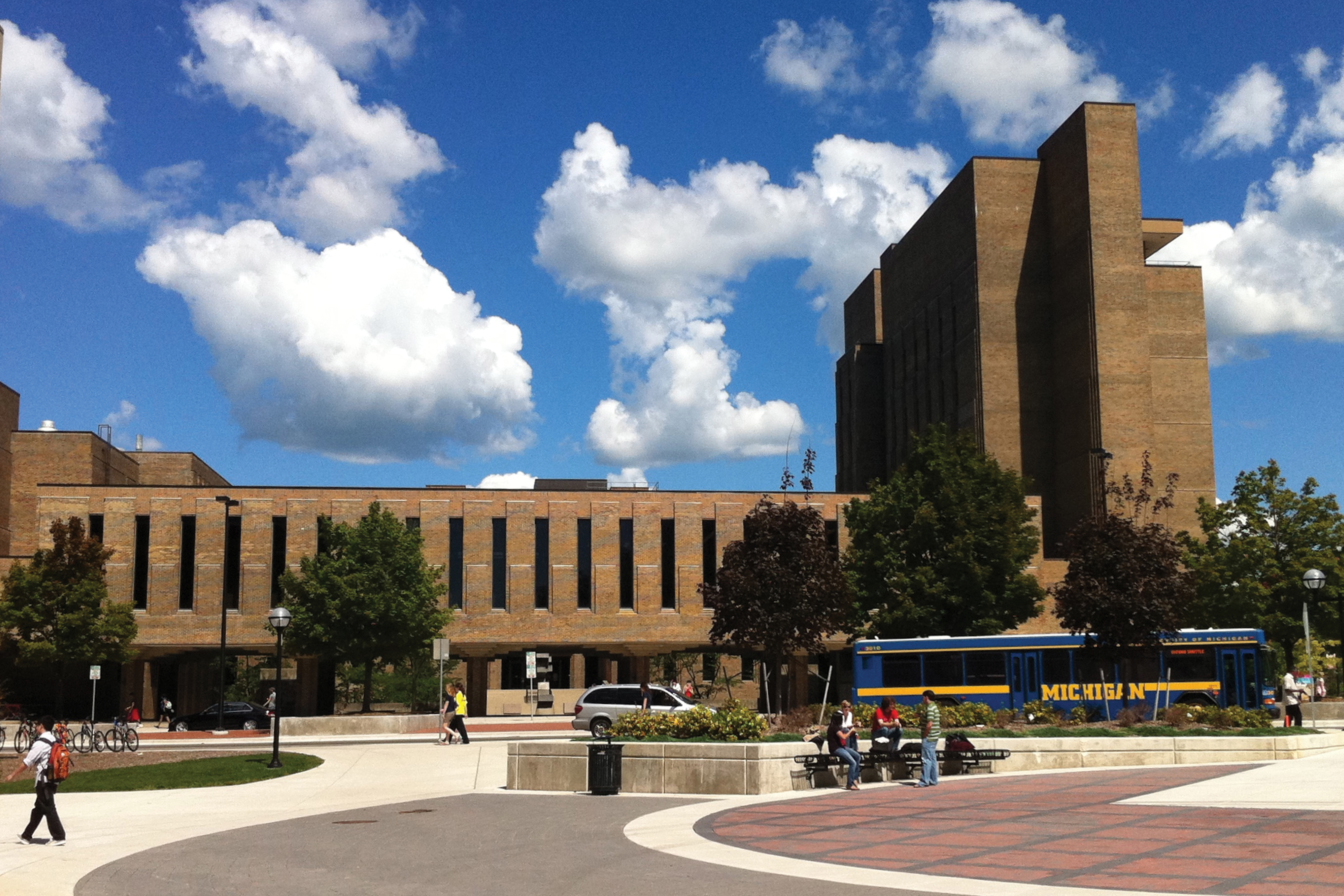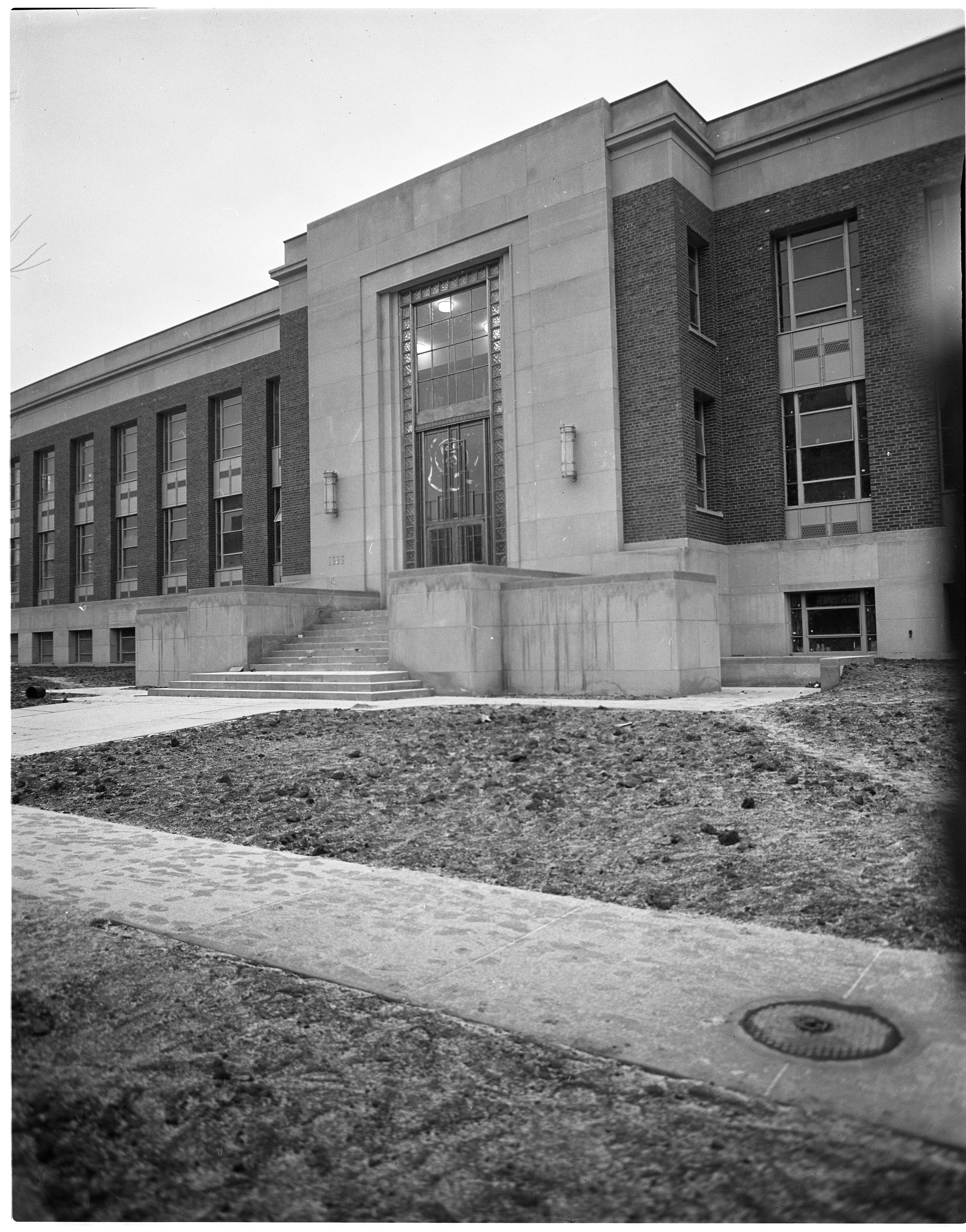School of Dentistry

The School of Dentistry today
In 1909, at the end of the first decade of ‘The American Century’, the twentieth century, the University of Michigan became the first state university to open a school of dentistry (Mastey 2000). Previously occupying an old professor’s house, the University recognized the need create a space designed to serve the needs of the program’s students (Donnelly, Shaw, and Gjelsness 1958). The original 1909 building, located on North University, held facilities designated for dentistry training instruction. Recognizing the need to expand, the University accepted a donation from the W.K. Kellogg Foundation and built the Kellogg Building in 1938 (Michigan Modern 2017).
This expansion was built on the site of Prettyman’s Boarding House, a popular student eating and gathering place. In a 1938 edition of The Michigan Alumnus, the author noted, “PRETT’S” is being torn down! The famous boarding house, of the triumvirate which one reigned at the top in student popularity in Ann Arbor for many undergraduate generations, is in the hands of the wreckers. It is being demolished to make way for the new Dental Building, which will occupy its site at the corner of North University Avenue and Twelfth Street, to the north of Barbour Gym.” Unofficial student hangouts located near the University buildings gradually reduced in number over the years as the University expands.

The entrance to the Kellogg Building, 1940
Over the years, the School of Dentistry continued to thrive. In 1971, renovations by the architectural firm Smith, Hinchman & Grylls significantly updated the building’s appearance, giving the building its distinctive current look (Michigan Modern 2017). There is a myth among students that the building is designed to look like a tooth, one of the many nuggets of lore associated with the U-M campus.
Situated on the northeast corner of the original University campus boundary, the School of Dentistry stands near present-day Ruthven Museums Building, the Chemistry Building, the Michigan League and the University Health Service, a resource for students needing medical care. The School of Dentistry also stands near the C.C. Little Building .
Today the School of Dentistry offers academic programs in a wide variety of areas under the dentistry including a Bachelor of Science in Dental Hygiene undergraduate program, a Master’s program, a Doctor of Dental Surgery (D.D.S.) designation as well as a Master in Science and Ph.D programs (“Admissions” 2017). The school also offers research opportunities. (“Research & Research Training” 2017; “Mission Statement of the School of Dentistry” 2017)
The pre-professional programs of the School of Dentistry offer a strong foundation for individuals seeking to enter the related professions. Multi-year programs, these degrees are akin to other extensive postgraduate programs such as medical or school in terms of the amount of time and often, expense in tuition. Conflicts have arisen over the years at U-M’s School of Dentistry, notably including the case of Alissa Zwick who was expelled from the school during her third year of study (Stevens 2008; Menaldi 2009). Despite having been admitted and completed two years of the program, faculty and staff of the School of Dentistry deemed she was “unfit to practice dentistry.” Zwick countered shortly after, resulting in a $1.7 million payout to her from the University (Menaldi 2009).
Key to this case, which culminated in a federal trial, was the position of School of Dentistry as part of a public, state-funded university. In Zwick’s case, as an admittee to the program and current student, she had “property interest” as a resident of the state (Stevens 2008). As a result, individuals with a property interest cannot be dismissed without due process of law (Stevens 2008).
While seemingly an inconsequential fact that the University of Michigan was the first state funded institution to open a dental school, this case and others like it reveal the benefits as well as the pitfalls of a state affiliation. It is curious to consider the ramifications of higher education when it is public versus when it is private and its influence on the student experience (“Student Life” 2017).
Sources
-
“Admissions.” School of Dentistry. University of Michigan. 2017 http://www.dent.umich.edu/admissions
-
Kelsey, Charles, C. The University of Michigan: An Encyclopedic Survey; Wilfred B. Shaw Volume V; . 96-108. Ann Arbor : University of Michigan Press, 1958.
-
Mastey, John. “School of Dentistry celebrates 125th anniversary and renovated facilities.” The University Record. September 5, 2000 http://www.ur.umich.edu/0001/Sep05_00/7.htm
-
Menaldi, Veronica. “University will pay legal fees of former dental student.” The Michigan Daily March 17, 2009. https://www.michigandaily.com/content/2009-03-18/university-will-pay-legal-fees-former-dental-student
-
“Mission Statement of the School of Dentistry” School of Dentistry. University of Michigan. 2017. http://www.dent.umich.edu/about-school/mission-statement-school-dentistry
-
“Research & Research Training.” School of Dentistry. University of Michigan. 2017. http://www.dent.umich.edu/research
-
Stevens, Lindy. “Expelled dental student awarded $1.7 million in lawsuit against ‘U’” The Michigan Daily December 2, 2008. https://www.michigandaily.com/content/2008-12-03/former-dental-student-awarded-17-million-lawsuit
-
“Student Life.” School of Dentistry. University of Michigan. 2017. http://www.dent.umich.edu/student-life
-
The University of Michigan: An Encyclopedic Survey; Walter A. Donnelly, Wilfred B. Shaw, and Ruth W. Gjelsness, editors; Ann Arbor : University of Michigan Press, 1958.
-
“University of Michigan School of Dentistry Building” Michigan Modern: Design that Shaped America, 2017. http://www.michiganmodern.org/buildings/university-of-michigan-school-of-dentistry-building
Image credit
-
“School of Dentistry Building Panorama.” School of Dentistry. University of Michigan. 2013. http://www.dent.umich.edu/sites/default/files/2013_SoDBuilding_Panorama.jpg
-
“Entrance to Kellogg Building, 1940.” Ann Arbor District Library. 2017. http://oldnews.aadl.org/taxonomy/term/51508